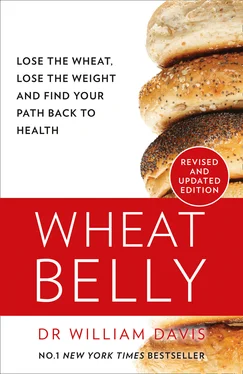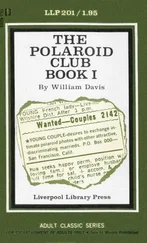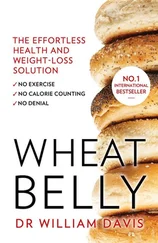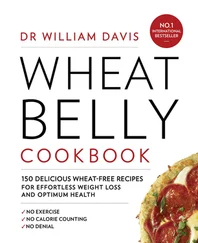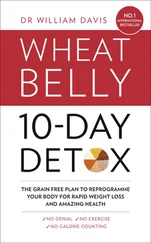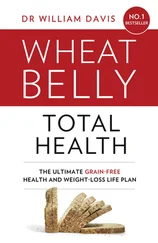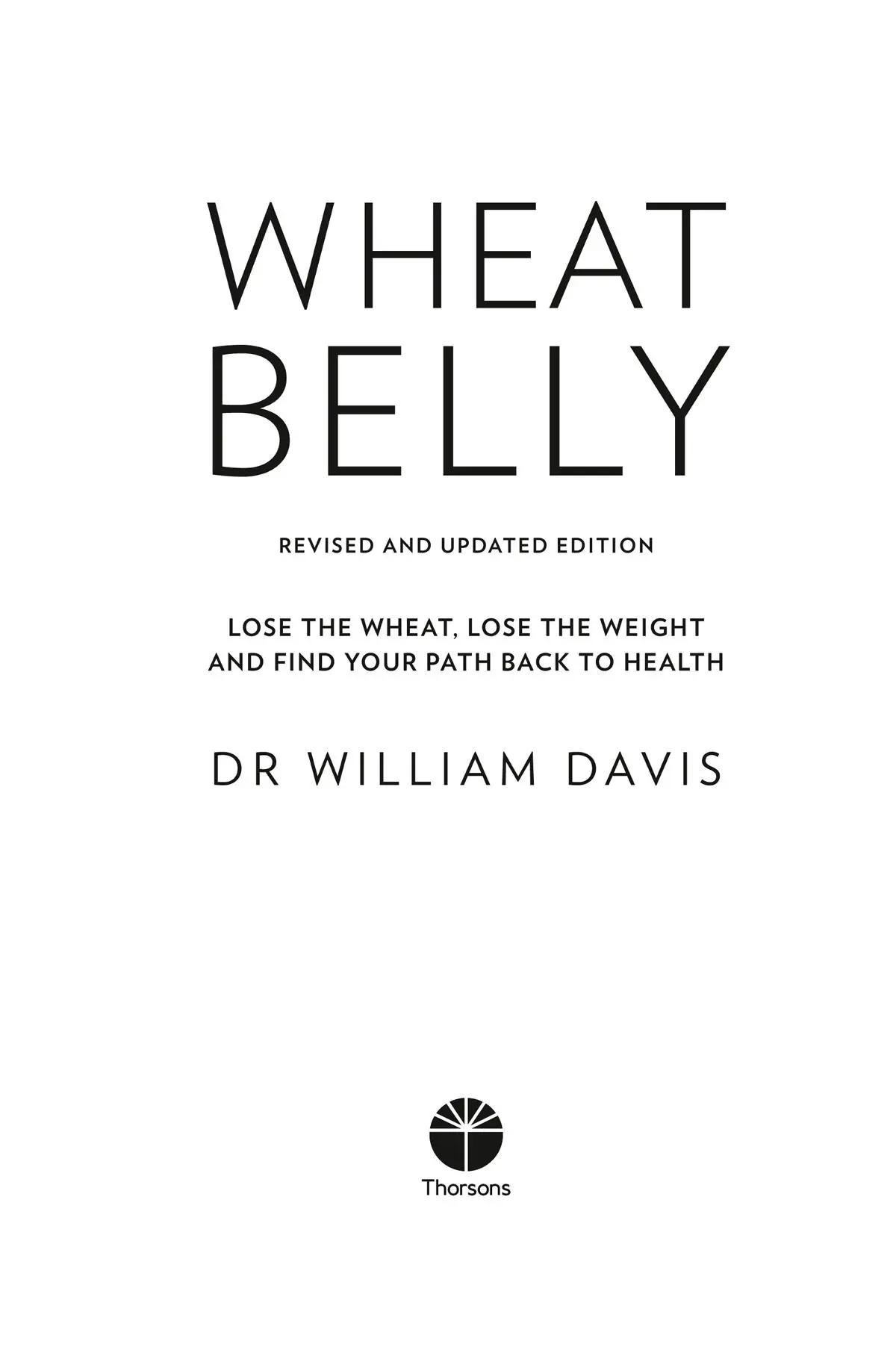
COPYRIGHT
This book is intended as a reference volume only, not as a medical manual. The information given here is designed to help you make informed decisions about your health. It is not intended as a substitute for any treatment that may have been prescribed by your doctor. If you suspect that you have a medical problem, we urge you to seek competent medical help.
Mention of specific companies, organisations or authorities in this book does not imply endorsement by the author or publisher nor does mention of specific companies, organisations or authorities imply that they endorse this book, its author, or the publisher.
Thorsons
An imprint of HarperCollins Publishers
1 London Bridge Street
London SE1 9GF
www.harpercollins.co.uk
First published in the US by Rodale Books, 2011, 2019
First published in the UK by Thorsons 2014
This revised UK edition published by Thorsons 2019
FIRST EDITION
© Dr William Davis 2011, 2014, 2019
Cover layout design © HarperCollins Publishers Ltd 2019
Cover photograph © Getty Images
Progress photos provided by the subjects
A catalogue record of this book is available from the British Library
Dr William Davis asserts the moral right to be identified as the author of this work
All rights reserved under International and Pan-American Copyright Conventions. By payment of the required fees, you have been granted the nonexclusive, non-transferable right to access and read the text of this e-book on screen. No part of this text may be reproduced, transmitted, downloaded, decompiled, reverse engineered, or stored in or introduced into any information storage retrieval system, in any form or by any means, whether electronic or mechanical, now known or hereinafter invented, without the express written permission of HarperCollins e-books.
Find out about HarperCollins and the environment at www.harpercollins.co.uk/green
Source ISBN: 9780008367466
Ebook Edition © December 2019 ISBN: 9780007568147
Version 2019-12-04
DEDICATION
For all the readers who have had the courage
to try on this new and unconventional lifestyle,
only to be surprised by its power.
CONTENTS
Cover
Title Page
Copyright
Dedication
Foreword
INTRODUCTION
PART ONE
WHEAT: THE UNHEALTHY WHOLE GRAIN
1. WHAT BELLY?
2. NOT YOUR GRANDMA’S MUFFINS: THE CREATION OF MODERN WHEAT
3. WHEAT DECONSTRUCTED
PART TWO
WHEAT AND ITS HEAD-TO-TOE DESTRUCTION OF HEALTH
4. HEY, MAN, WANNA BUY SOME EXORPHINS? THE ADDICTIVE PROPERTIES OF WHEAT
5. YOUR WHEAT BELLY IS SHOWING: THE WHEAT/OBESITY CONNECTION
6. HELLO, INTESTINE. IT’S ME, WHEAT. WHEAT AND CELIAC DISEASE
7. SWALLOW: IT CAN’T BE ALL THAT BAD … OR CAN IT?
8. DIABETES NATION: WHEAT AND INSULIN RESISTANCE
9. CATARACTS, WRINKLES, AND DOWAGER’S HUMPS: WHEAT AND THE AGING PROCESS
10. MY PARTICLES ARE BIGGER THAN YOURS: WHEAT AND HEART DISEASE
11. IT’S ALL IN YOUR HEAD: WHEAT AND THE BRAIN
12. BAGEL FACE: WHEAT’S DESTRUCTIVE EFFECT ON SKIN
13. DROPPING ACID: WHEAT AS THE GREAT pH DISRUPTER
PART THREE
SAY GOOD-BYE TO WHEAT
14. GOOD-BYE, WHEAT: CREATE A HEALTHY, DELICIOUS, WHEAT-FREE LIFE
15. LIFE WITHOUT WHEAT GETS EVEN BETTER
16. MR. AND MRS. WHEAT BELLY
17. WHEAT BELLY–SHRINKING RECIPES
EPILOGUE
APPENDIX A Looking for Wheat in All the Wrong Places
APPENDIX B A Beginner’s Guide to Fermentation
References
Index
Acknowledgments
About the Publisher
FOREWORD
HAVE YOU EVER come home from the grocery store with a fresh container of milk, opened it and immediately realized that it was bad—sour-smelling, curdled, unfit to drink?
Feed it to the cat? Probably not. Lighten your coffee? I don’t think so. Pour it down the drain—yeah, that’s the ticket. Or maybe go back to the store with some of the curdled remains and ask for your money back.
That is what your reaction to conventional dietary advice should be. You should wrinkle your nose at the bad smell that emanates from advice that creates an astonishingly long list of health problems—from eczema to obesity, from Plantar fasciitis to colon cancer. Blessed by food manufacturers, extolled by dietitians, positioned on the most visible eye-level shelves in grocery stores, wheat is elevated to top of the list of foods to include in every meal by most doctors. Consensus dietary opinion has gotten us into a heap of trouble, creating an epidemic of bulging bellies and a market for insulin injections and toxic drugs designed to address the autoimmune conditions of people who waddle, limp, or ride scooters in XXL pants and dresses. This situation is unprecedented in human history.
Should we accept the common judgment that the largest epidemic of chronic health issues in history is due to laziness, sloth, moral weakness, failure to tally calories in and calories out, mysterious and unidentified viral infections, as is often done by the medical community? Or might official dietary advice itself be the cause?
Something big—really big—was sparked with the publication of Wheat Belly . I believe it helped restore a sense of smell to the public, helping many to realize that there indeed was something wrong in our diets that, despite long-term blessings from “official” sources of dietary wisdom, created a stink you couldn’t block out, no matter how many times you plugged your nose. The wheat might have been seven-grain, organic, and rich in fiber, but there was so much wrong with following the dictates of conventional advice, even when followed to a T. It prompted people to quote Einstein: “The definition of insanity is doing the same thing over and over again and expecting different results” after doctors admonished them for gaining weight, experiencing higher blood sugars, and feeling awful while following a diet low in fat and rich in “healthy whole grains.” “You need to try harder,” they’d be told. If not insanity, this was at least blatant irrationality.
Several years after the initial publication of Wheat Belly and millions of readers later, it has become clear that our species made a huge blunder: seeds of grasses, i.e., wheat and its genetic cousins, do not belong in the human diet, let alone be promoted as healthy or necessary. You can’t eat the leaves, stalks, or husks of grasses—so why should we be able to consume the seeds?
Not eating this thing called wheat, celebrated by virtually all who offer dietary advice, is a revelation as big as recognizing that trafficking humans is a bad idea or that enslaving populations for cheap labor is not right. You think I’m pushing the comparisons too far? I predict that, as you get into this book, you will soon recognize how deep, disabling, and prevalent the consequences of consuming wheat are for us, and that a comparison to enslavement is really not that far off. It’s not just a matter of avoiding gluten or reducing calories. You have to make healthy additions as well. If you were to disapprove of a lion’s lifestyle because you watched it tear open the abdomen of a wildebeest, then consume its liver, intestines, and heart, and then, out of disgust, replace its diet with kale and spinach—you would have a dead lion in short order. Restoring the human diet to its natural state, one programmed into our genetics, is like giving the lion another serving of wildebeest: It is lifesaving. Recognizing the fundamental error we made as a species by viewing the seeds of grasses as food is just as big a mistake, but one that we have barely started to recover from with wheat and related grains comprising 70 percent of all worldwide human calories. This is no small economic matter, either. Think of all the farmers, millers, bakers, food companies, dietitians, and multinational Big Agribusiness conglomerates that play a role in an industry created around this awful collection: seeds of grasses misconstrued as food. Undoing this mistake will be messy.
Читать дальше
